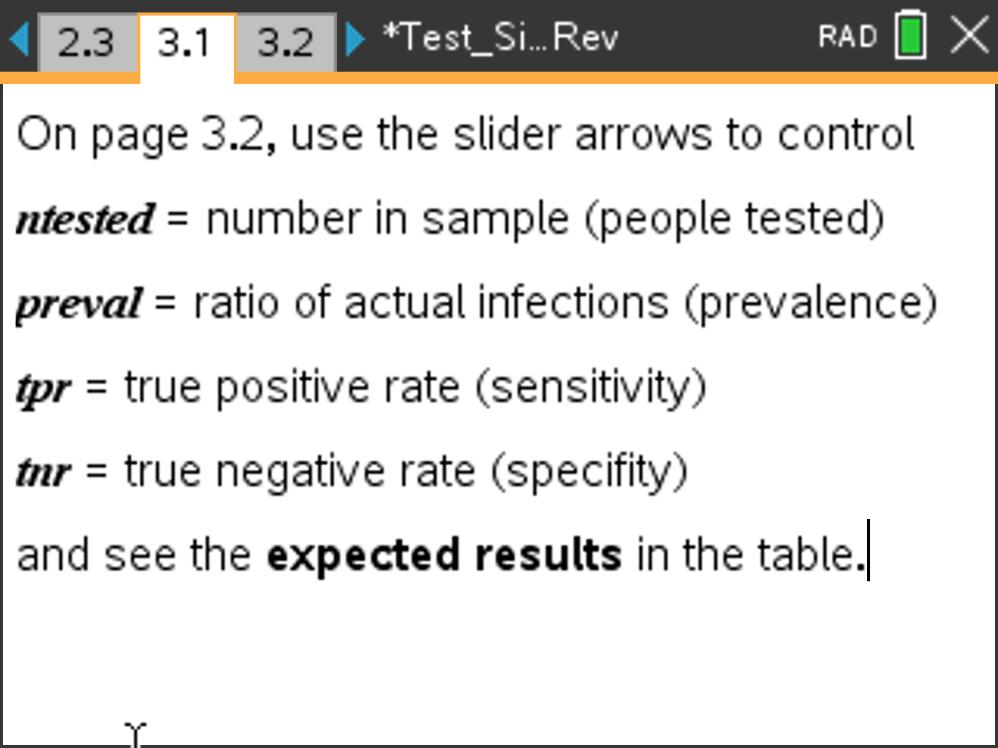Modeling: Exploring Medical Tests Results

9-12
TI-Nspire™ CX CAS
Modeling: Exploring Medical Tests Results
In this activity, students investigate ideas that have appeared in many sources related to the recent pandemic. They will become familiar with terms such as false positives and false negatives, prevalence, sensitivity and specificity.
Students will be able to:
- Identify common terms used in reporting screening test results
- Identify whether the number of false positives or false negatives is more important for a given situation
- Create and interpret two-way tables involving conditional probabilities
- Use both empirical and theoretical approaches to investigating probabilities
The activity can be used whenever students have a background in elementary probability and reasoning with percentages. Students are introduced to conditional probability through simulations to develop understanding of the concepts and of the variability inherent in measuring behaviors in the real world.
In the first part of the activity, students will investigate the prevalence of flu and the predictive rate of screening tests based on flu data from the last several years. They will analyze screening test results for a typical rapid test for the flu to estimate the probability that someone who tests positive for the flu actually has the flu and that someone who tests negative actually does not have the flu. In the second part of the activity, students will summarize screening test information in two-way tables and use the data to estimate different conditional probabilities.
Lesson Files
9-12
TI-Nspire™ CX CAS
Vernier EasyData,Vernier EasyLink and Vernier EasyTemp are registered trademarks of Vernier Science Education.

